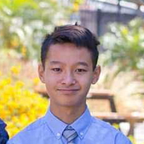The U — 20 World Cup Squad that Redefined American Youth Development
Growing up, I often had the habit of watching as many soccer tournaments as possible — whether it was a youth tournament, women’s tournament, or women’s youth tournament, I tried to watch it all.
Moreover, I was always given a satisfying feeling whenever a player I had been introduced to at the youth level made the jump to the senior level. Take Mallory Pugh for instance — at the young age of 24, she’s still got much of her career ahead of her. Yet, I still remember watching her play at the 2014 U — 20 Women’s World Cup when she was just 17 and arguably one of the greatest prospects in the USWNT player pool.
Another player that I was introduced to a long time ago was Gabriel Jesus in the 2015 U — 20 World Cup. It was evident to me during that tournament that he was going to go on and become one heck of a player.
But for whatever reason, I didn’t watch the 2019 U — 20 World Cup — then again, I didn’t watch much international soccer at all during that time. The absence of the US at the 2018 World Cup had still rung large in my heart, and it was entirely possible that during this time, I lost the fire that fueled my desire to be an American soccer fan.
Nevertheless, my decision to not watch this tournament was probably one of my biggest mistakes as a soccer fan (yes, even more so than becoming a Manchester United fan). The fact of the matter is, the 2019 U — 20 World Cup was arguably one of the turning points in American soccer history. The American squad reached the quarterfinals — just like how the U — 20 squads prior had reached the U — 20 World Cup quarterfinals in 2015 and 2017, respectively.
But the 2019 squad was unique for multiple reasons. The 2015 squad got to face Colombia in the Round of 16, and the 2017 squad got to face New Zealand in the Round of 16. On the other hand, the 2019 squad had to face France. I mean no disrespect when I say that the 2019 squad had it hardest.
Furthermore, the 2019 squad was eons superior in talent than its predecessors. The 2015 and 2017 squads still had the problem of being “too American” in the derogatory sense — it had a lot of hardworking and disciplined players that suffered technical limitations. The main exceptions to this problem were Josh Sargent and Luca de la Torre (of whom I just recently released an article about, linked here). Both of them were a part of the 2017 cycle.
The 2019 squad, on the other hand, was filled with highly technical players. Sergino Dest, who is currently the undisputed starting right back for the USMNT due to his fantastic ability on the ball, was a part of this squad. Chris Richards, one of the best ball playing defenders in the USMNT player pool, was also a part of this squad. Julian Araujo, who was one of the US’s greatest full back prospects before he switched to Mexico in the fall of last year, was a part of this squad. Alex Mendez and Richard Ledezma, two of the most technical and creative midfield prospects the US has ever produced, were also a part of this squad — it just so happens that both of these players are currently being fought over by the US and Mexico for their services. Timothy Weah, who was probably the US’s most dangerous attacker during the last cycle of World Cup qualifying, was a member of this squad. Konrad de la Fuente and Ulysses Llanez — two of the highest ceiling wingers the US has ever produced— were also members of this squad.
On a side note, Mendez, Ledezma, Llanez, and to a certain degree, de la Fuente, are all what I like to call “cult favorites” in the USMNT fan sphere. They’re all players that have yet to fully hit their stride in their careers, but are nonetheless so incredibly talented and young enough (they’re all in their early 20s) that fans refuse to give up on them. Keep an eye out for an article on them in the near future.
What’s interesting to think about too is that this squad seemed to be the first indication of a fierce potential dual national battle between Mexico and America for the years to come. The fact of the matter is, the American talent pool in years past was too weak for Mexico to want to recruit any of their players. That really changed around the time of this squad — as I stated earlier, Julian Araujo would go on to switch to Mexico, and the Mexican federation has been continually keeping in contact with Alex Mendez and Richard Ledezma. Another player in the 2019 U — 20 World Cup squad, David Ochoa, recently switched to Mexico last year as well. Ulysses Llanez is also eligible to play for Mexico. All of these players are talented enough to represent that team if they can continue developing.
That says a lot about how far American development has come, where we can now faithfully say that Mexico and the US are neck — and — neck. But we still have much to improve. If we really want to becoming a global soccer superpower, we’ll have to shoot for higher (sorry El Tri fans) than just being even with Mexico.
